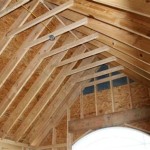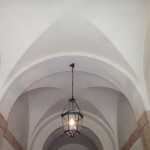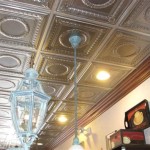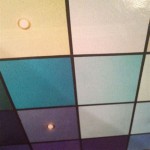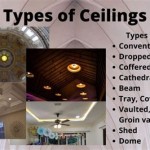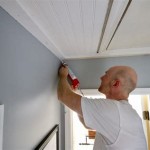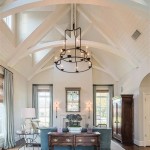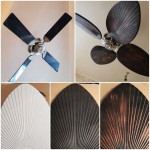Fluorescent Ceiling Light Fixtures: What You Need to Know
Fluorescent ceiling light fixtures have been a mainstay in commercial and residential lighting for decades. Their energy efficiency and relatively long lifespan have made them a cost-effective choice for illuminating large spaces. However, the world of fluorescent lighting is more complex than simply screwing in a bulb. Understanding the different types, components, and considerations involved in selecting and maintaining these fixtures is essential for optimizing their performance and lifespan.
This article provides a detailed overview of fluorescent ceiling light fixtures, covering their key components, types, selection criteria, installation considerations, maintenance requirements, and environmental aspects. The information presented aims to equip readers with the knowledge necessary to make informed decisions about using and managing fluorescent lighting in their environments.
Understanding the Basic Components
A fluorescent ceiling light fixture is comprised of several core components working in concert to produce light. These components directly influence the fixture’s performance, efficiency, and lifespan. A thorough understanding of each component is critical for effective troubleshooting and informed decision-making regarding replacements and upgrades.
The primary component is the fluorescent lamp itself. These lamps are glass tubes filled with a low-pressure mercury vapor and coated internally with phosphor. When electricity flows through the tube, it excites the mercury vapor, producing ultraviolet (UV) light. This UV light then strikes the phosphor coating, which fluoresces, converting the UV light into visible light. The specific type of phosphor coating determines the color temperature and color rendering index (CRI) of the light produced. Different phosphors are used to create a range of light colors, from warm white to cool daylight.
Next is the ballast. The ballast serves as a crucial regulator of electrical current to the fluorescent lamp. It limits the amount of current flowing through the lamp, preventing it from drawing excessive power and burning out prematurely. There are two primary types of ballasts: magnetic and electronic. Magnetic ballasts are older, less efficient technology, relying on a transformer and inductor to regulate current. They are typically heavier, noisier (producing a noticeable hum), and less energy-efficient than their electronic counterparts.
Electronic ballasts, on the other hand, use solid-state circuitry to regulate current. They are more energy-efficient, lighter, and operate more quietly than magnetic ballasts. Furthermore, electronic ballasts often offer features like instant start and programmed start, which can extend the lifespan of the fluorescent lamps. The programmed start is generally preferable, as it slowly heats the lamp's electrodes before applying full voltage, reducing stress and wear.
The fixture housing provides the structural support for all the other components. It typically consists of a metal frame that holds the lamp, ballast, and wiring. The housing also often includes a reflector, which is a highly reflective surface designed to direct light downwards and improve the overall efficiency of the fixture. The design of the housing can significantly impact the fixture's light distribution and aesthetic appeal.
Lastly, the lampholders, also known as sockets, are the connectors that physically hold the fluorescent lamp in place and provide the electrical connection to the ballast. These lampholders must be compatible with the specific type of lamp being used and are designed for easy lamp replacement.
Types of Fluorescent Ceiling Light Fixtures
Fluorescent ceiling light fixtures come in various forms, each designed for specific applications and aesthetic considerations. Understanding the different types available allows for selecting the most appropriate fixtures for a given space and lighting requirements. Choosing the correct fixture type can enhance both the functionality and visual appeal of a room.
One common type is the recessed troffer. Recessed troffers are designed to be installed within a suspended ceiling grid, often found in commercial spaces like offices and retail stores. They typically have a rectangular shape and can accommodate multiple fluorescent lamps. Troffers are appreciated for their clean, integrated appearance and their ability to provide uniform, glare-free lighting. They are available in various sizes, the most common being 2x2 feet and 2x4 feet.
Surface-mounted fixtures are another option, and they are mounted directly onto the ceiling surface. These fixtures are suitable for spaces without a suspended ceiling or where a more prominent lighting fixture is desired. Surface-mounted fixtures can come in a variety of shapes and sizes, including linear strips, circular fixtures (often referred to as "drum lights"), and more decorative options. They are generally easier to install than recessed troffers, as they do not require cutting into the ceiling.
Wrap-around fixtures are designed to be mounted on the ceiling and feature a diffuser that wraps around the sides of the fixture, providing a wider distribution of light. These fixtures are often used in hallways, utility rooms, and other areas where broad, even illumination is required. The wrap-around diffuser helps to minimize glare and create a more comfortable lighting environment.
High-bay fixtures are specifically designed for illuminating large, open spaces with high ceilings, such as warehouses, factories, and gymnasiums. These fixtures are typically mounted at a significant height and provide a high light output to effectively illuminate the entire space. They often incorporate reflectors to maximize light distribution and minimize light loss. High-bay fixtures are designed to withstand the demands of industrial environments and are built for durability and longevity.
Strip lights are simple, bare-bones fixtures that consist of a long, narrow housing with a fluorescent lamp mounted inside. These fixtures are often used in utility areas, workshops, and other spaces where functional lighting is the primary concern. Strip lights are typically the most affordable type of fluorescent fixture, making them a cost-effective option for basic lighting needs.
Key Considerations for Selection and Maintenance
Selecting the right fluorescent ceiling light fixture and implementing a proper maintenance plan are crucial for ensuring optimal performance, energy efficiency, and longevity. Several factors need to be considered when choosing fixtures, and regular maintenance will extend their lifespan and reduce energy consumption.
One crucial consideration is light output and color temperature. The required light output, measured in lumens, will depend on the size and purpose of the space being illuminated. For tasks that require fine detail or precision, higher light levels are generally needed. Color temperature, measured in Kelvin (K), affects the appearance and feel of the light. Warmer light (lower Kelvin values, such as 2700K-3000K) is often preferred for residential spaces, creating a cozy and inviting atmosphere. Cooler light (higher Kelvin values, such as 4000K-5000K) is typically used in commercial spaces, providing a brighter and more stimulating environment.
Energy efficiency is another important factor. Look for fixtures with electronic ballasts, as they are significantly more energy-efficient than magnetic ballasts. Also, consider the overall wattage of the fixture and the lumens per watt ratio, which indicates the amount of light produced per unit of energy consumed. Choosing energy-efficient fixtures can significantly reduce electricity bills and lower the environmental impact of lighting.
Maintenance also plays a key role in the long-term performance of fluorescent fixtures. Regular cleaning of the fixtures and lamps is important, as dust and dirt can accumulate and reduce light output. Lamps should be replaced when they start to dim or flicker, as this indicates that they are nearing the end of their lifespan. Replacing lamps promptly will ensure consistent light levels and prevent potential ballast damage.
Ballast maintenance is also critical. Magnetic ballasts are more prone to failure than electronic ballasts and may require replacement periodically. Signs of ballast failure include humming, flickering lights, and a burning odor. When replacing a ballast, it is essential to choose a compatible replacement and follow the manufacturer's instructions carefully.
Proper disposal of fluorescent lamps is an important environmental consideration. Fluorescent lamps contain mercury, which is a hazardous material. They should not be thrown away in regular trash. Instead, they should be recycled at a designated recycling facility. Many retailers and local governments offer programs for recycling fluorescent lamps.
Consider lighting controls as well. Implementing lighting controls, such as occupancy sensors and dimmers, can further reduce energy consumption and extend the lifespan of fluorescent fixtures. Occupancy sensors automatically turn off the lights when a space is unoccupied, while dimmers allow for adjusting the light level to match the task or mood. These controls can significantly improve the overall energy efficiency and usability of fluorescent lighting systems.
Lastly, always ensure that installation and maintenance are performed by qualified electricians. Improper installation or maintenance can lead to electrical hazards and premature fixture failure. Hiring a professional electrician will ensure that the fixtures are installed correctly and safely, and that any necessary repairs are performed properly.

How To Replace An Old Fluorescent Light Fixture Young House Love

What Is Flicker And Why Should We Pay Attention To It

Stories Paradowski Creative

Everything You Need To Know About Cove Lighting Systems Homelane Blog

Garage Work Lighting Plug In Cord Wiring Update

Overthinking Garage Work Lighting Installation In Progress

Garage Work Lighting Plug In Cord Wiring Update

How To Replace A Fluorescent Light Fixture With Regular

What You Need To Know About Changing Light Fixtures In Your Al The Homes I Have Made

Led Ceiling Lights Everything You Need To Know Before Purchasing
Related Posts

